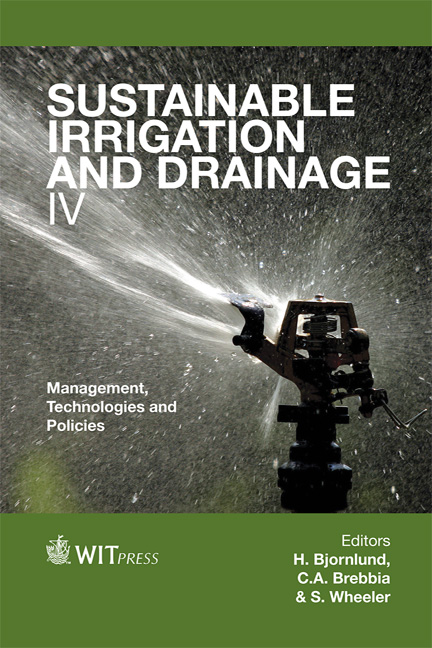Biomass Yield And Partitioning Of Greenhouse Grown Indigenous Crop Cucumis Myriocarpus In Response To Irrigation Frequency And NPK Fertilizer Application Rate
Price
Free (open access)
Transaction
Volume
168
Pages
13
Page Range
339 - 351
Published
2012
Size
536 kb
Paper DOI
10.2495/SI120291
Copyright
WIT Press
Author(s)
R. J. Nkgapele & M. S. Mphosi
Abstract
A study was conducted during the 2009/10 summer growing season to determine the effect of varying irrigation frequencies and NPK fertilizer application rates on biomass yield and partitioning to plant fractions of Cucumis myriocarpus. The experiment was laid out in a split-plot design arrangement and replicated five times. Three irrigation frequencies, namely, 2, 4 and 6 day interval, were the main plots and sub-plot treatments were NPK fertilizer levels combined in a ratio 3:2:1 (60-40-20 kg NPK ha-1, 120-80-40 kg NPK ha-1 and 180-120-60 kg NPK ha-1 ) and a control treatment of 0 Kg NPK ha-1. Higher and lower total and plant fraction biomass yield were observed in the intermediate category of four day irrigation frequency, but varied among the different rates of NPK fertilizer rate. In conclusion, the results indicate that the plant can produce adequately under greenhouse conditions with moderate to limited water supply and provision of supplemental nutrients. Keywords: irrigation frequency, biomass yield, root/shoot ratio, ethno-botanical, indigenous leafy vegetable.
Keywords
irrigation frequency, biomass yield, root/shoot ratio, ethno-botanical, indigenous leafy vegetable.





